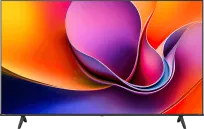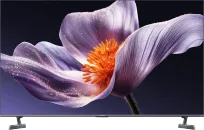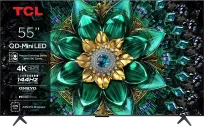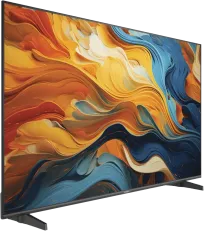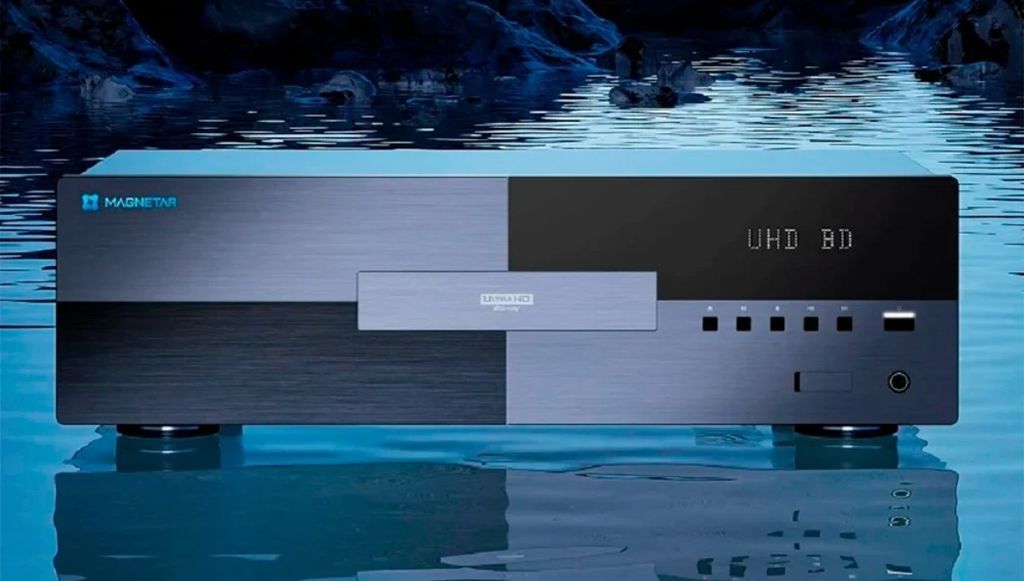
Is it really the Samsung S90F that will become the new king of OLEDs? Initial tests have already appeared online and everything suggests that the Korean manufacturer is returning to the battle for the throne in the premium category. The successor to the S90D model and a competitor to models such as the LG C5 or Bravia 8 II, has several aces up its sleeve. Let's take a look at what we've learned from the first measurements.
Appearance and Design – No Changes, But That's Good




In terms of appearance, the Samsung S90F does not introduce any significant changes compared to its predecessor – and in our opinion, that is a good decision. The S90 series has simply been appealing from the very beginning. This is thanks to its minimalist, refined design. At the front, we have very slim, metal borders that make the screen almost blend into its surroundings. The whole unit stands on a single, central base. At the back, the design remains quite classic – just a regular OLED without overly complicated styling, featuring a typical "back panel." Not everyone may like this, but in our opinion, the S90F strikes a good balance when it comes to design. It is simply a good-looking television that will fit well into most interiors.
Black and contrast – the highest level with the same problems
There are no revolutions here either – and thank goodness for that. After all, we are talking about OLED, so contrast and deep blacks are by definition perfect. The S90F does not improve anything because there was simply nothing to improve. However, it is worth noting that in Europe, only the 65-inch variant (at least for the time being) has been equipped with a QD-OLED panel, which can slightly "lighten" blacks in very bright rooms. This is a typical feature of this technology – subtle, but noticeable in strong external light.


HDR – the king of value returns thanks to brightness
Why do we believe that the S90F is a likely return of the king of value among OLEDs? Mainly because of the brightness, which is making a huge impression this year. Just recently, we wrote about the new LG OLED C5 series, which has finally surpassed the magical barrier of 1000 nits peak HDR brightness. And it seems that Samsung is not to be outdone and is also stepping up its game. According to measurements by the RTINGS, the S90F model with a QD-OLED panel is capable of reaching as much as 1500 nits of peak brightness! This is a result 50% better than that of the S90D. It can therefore be confidently stated that it will be one of the brightest, if not the brightest OLED in its price class!
And what about the versions equipped with a WOLED panel? For now, we do not have specific data, but knowing Samsung, which has shown many times that it can equalise the brightness of different types of panels through software, we can assume that any differences – if they appear – will be small. In the worst-case scenario, in Europe this may mean slightly lower brightness than the American versions with the QD-OLED panel, but we are still talking about a very good level.
Is Europe being treated worse again? The panel lottery is back
Unfortunately, it seems that European customers have to rely on "luck" again, as Samsung continues the policy of the so-called matrix lottery. For the time being, it is known that only the 65-inch variant sold in Europe has received the QD-OLED panel – that is, the "better" one. The other sizes, including the popular 55 and 77 inches, are based on the classic WOLED.
If you want to have 100% certainty about which panel you are buying, just look at the end of the model designation:
DAT = QD-OLED
DAE = WOLED
Size | Model | USA | Europe |
|---|---|---|---|
42" | S90F | WOLED | WOLED |
48" | S90F | WOLED | WOLED |
55" | S90F | QD-OLED | WOLED |
65" | S90F | QD-OLED | QD-OLED |
77" | S90F | QD-OLED | WOLED |
83" | S90F | WOLED | WOLED |
Gaming – monster but without Dolby Vision
There are no major surprises here either. The S90F is a gaming beast like its predecessor, one that gamers have known from previous years. We have full support for 4K at 144 Hz, very low input lag, a complete set of VRR technologies, AMD FreeSync Premium, ALLM, as well as a built-in Xbox Cloud Gaming app for cloud gaming – without the need to connect a console. The well-known Game Bar is also present, allowing quick adjustments to picture settings, latency, or FPS counter – all on the fly, without leaving the game.
Of course, we won't find Dolby Vision for Xbox here, but let's be honest – that's already no surprise to anyone. Samsung has been going its own way for years, focusing on its own HDR solutions (including HDR10+), and there is little indication that this policy will change.
AI, AI, AI… new processor, but no revolution
Samsung boasts about its new "intelligent" processor, but... perhaps we should temper our excitement. Compared to last year's model, the S90F is equipped with a new third-generation AI NQ4 chip. According to the manufacturer's announcements, it is meant to be several times better in many aspects: scene analysis, object detection, intelligent sharpening, and upscaling materials to 4K.
In theory, this sounds promising – in practice… it does exactly the same as its predecessor, just a bit faster and somewhat more effectively. Indeed, image upscaling still performs well – SD and HD images look clear, without significant artefacts, and the edges are not artificially sharpened. However, if we were to compare this with the competition, the latest LG OLED C5 or Sony Bravia 8 II offer noticeably better results. The S90F is not bad, it just doesn't extract as much from this processor as we would expect from the marketing announcements. It still gets the job done – but in comparison to the competition, it doesn't shine as brightly as it could.
It is worth noting, however, that image upscaling and tonal transition processing are not always equally important for every user – especially if we mainly watch content in native 4K. In the case of the QD-OLED panel, which naturally handles smooth gradations very well and does not suffer from typical banding issues, minor imperfections in the upscaling algorithms are simply less noticeable in everyday use.
However, the situation changes when we choose the variant with a WOLED panel. Here, the matrix struggles a bit more with naturally smoothing tonal transitions, and the quality of upscaling begins to matter more – especially in HD materials such as traditional TV broadcasts. It is in these conditions that Samsung may perform worse than its competitors.
OLED sales hit?
Samsung S90F has everything it needs to become one of the biggest sales hits among OLED televisions in 2025 – especially in the 65-inch version with a QD-OLED panel. It boasts very impressive peak brightness, excellent colour gamut coverage, outstanding gaming capabilities, and quite a wide selection of applications thanks to the Tizen system. All of this means that the 65-inch variant can almost be recommended without reservation – it’s an OLED that combines top-notch picture quality with a more accessible price than flagship models.
It’s just a shame that we cannot speak with such certainty about the other sizes. In the case of the version with a WOLED panel, picture quality may be noticeably lower – and that raises the question of whether, with a similar budget, it would be better to go for the competition from LG or Sony?
The answer to this question will be revealed soon, and in the meantime, we invite you to check out our reviews of televisions from the 2024 sale – you can find excellent models at really attractive prices!
 Katarzyna Petru
Katarzyna Petru